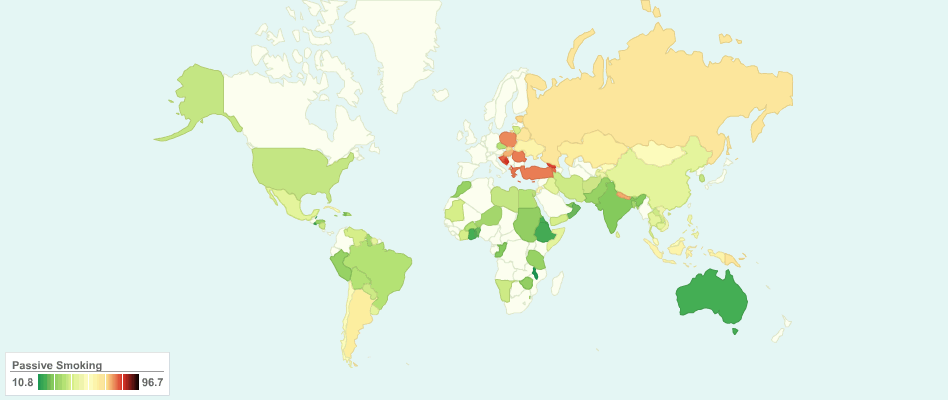This chart shows percentage of youth exposed to passive smoking at home around the world.
Passive smoking, also known as secondhand smoke or environmental tobacco smoke, is a mixture of sidestream smoke from the burning tip of the cigarette and mainstream smoke exhaled by the smoker. More toxic per unit of tobacco than mainstream smoke, sidestream smoke is the major component of passive smoking. At least fifty carcinogenic chemicals have been identified in secondhand smoke.
The risk of lung cancer in nonsmokers exposed to passive smoking is increased by between 20 and 30 percent, and the excess risk of heart disease is 23 percent.
Children are at particular risk from adults’ smoking. Adverse health effects include pneumonia and bronchitis, coughing and wheezing, worsening of asthma, middle ear disease, and possibly neuro-behavioural impairment and cardiovascular disease in adulthood.
A pregnant woman’s exposure to other people's smoking can harm her foetus. The effects are compounded when the child is exposed to passive smoking after birth.
"An hour a day in a room with a smoker is nearly a hundred times more likely to cause lung cancer in a non-smoker than 20 years spent in a building containing asbestos."
-Sir Richard Doll, 1985
16 years ago

